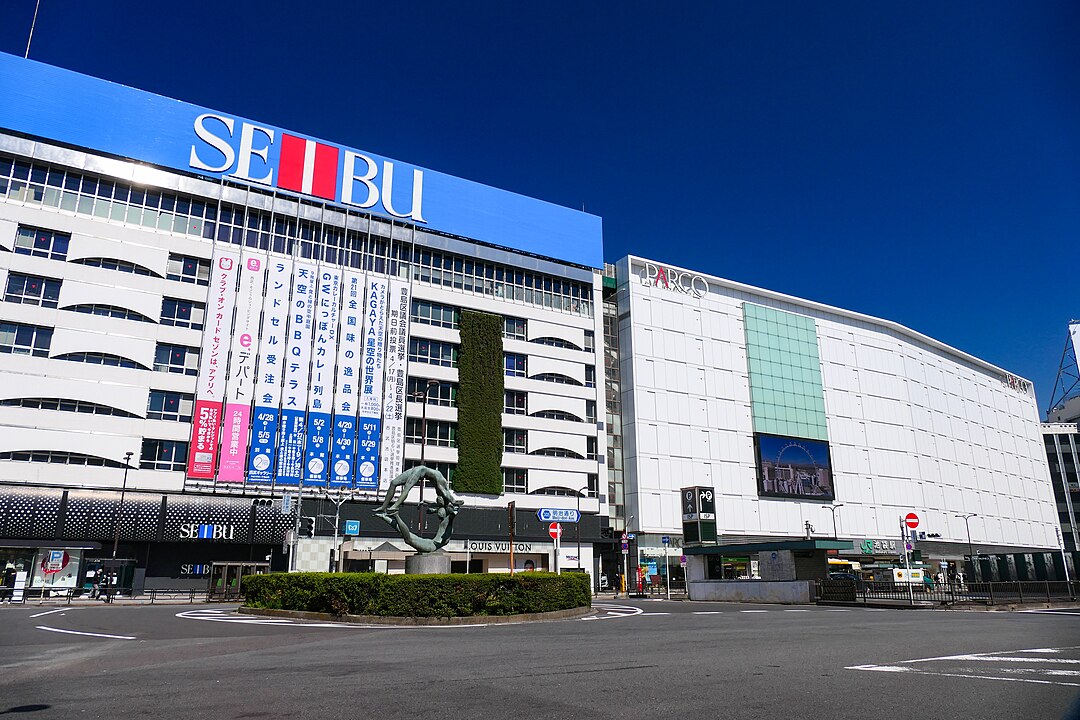Ikebukuro, one of Tokyo’s most vibrant commercial areas, attracts over a million visitors daily. This article will introduce you to this dynamic district and guide you through its unique charms.
Key Information
- Location: Northwestern corner of Tokyo’s Yamanote Line
- Main attractions: Sunshine 60 Building, Ikebukuro Station, department stores, electronics shops
- Highlights: Anime culture, shopping paradise, culinary hub
- Best time to visit: Year-round, especially spring and autumn
- Access: Multiple train and subway lines, including JR Yamanote Line
Historical Background
Ikebukuro was originally a small village during the Edo period. With the construction of railways, it gradually developed into an important transportation hub. After World War II, Ikebukuro rapidly rose to become one of Tokyo’s major commercial centers. Today, it’s a thriving metropolis combining shopping, entertainment, and culture.
Main Attractions
Sunshine 60 Building
Sunshine 60 is Ikebukuro’s landmark, standing 240 meters tall. The top floor houses an observation deck offering panoramic views of Tokyo. Open from 10:00 to 21:00, admission ranges from 700 to 1200 yen depending on the date. The building also houses an aquarium, planetarium, and other attractions, making it a one-stop entertainment center. The aquarium showcases marine life from around the world, including stingrays, sunfish, penguins, and seals, with tickets priced at 2600-2800 yen.
Ikebukuro Station
One of Japan’s busiest stations, handling over a million passengers daily. It’s a junction for multiple rail lines, including the JR Yamanote Line, Seibu Ikebukuro Line, and Tobu Tojo Line. The area surrounding the station is packed with large department stores and various shops, making it a shopper’s paradise. Restaurants and food stalls inside and around the station offer a wide range of cuisine, from traditional Japanese to international dishes.
Otome Road
A must-visit for anime fans, located north of Sunshine City. This street is lined with shops catering to female anime, manga, and cosplay enthusiasts. You can find various anime merchandise, doujinshi (fan-made manga), and cosplay costumes here. The street also features several maid cafes and butler cafes, offering unique experiences for visitors. It’s also a haven for doujinshi lovers, especially works targeting female audiences.
Tobu Department Store
Located at the west exit of the station, this large department store offers fashion, cosmetics, household goods, and more. The 14-story building is one of Tokyo’s largest department stores. Usually open from 10:00 to 20:00, with upper floors open from 10:30 to 19:00. The restaurant area operates from 11:00 to 22:00, offering various Japanese and international cuisines.
Seibu Department Store
This flagship store at the station’s east exit is another of Tokyo’s largest department stores, with a comprehensive range of products. The store has 8 floors, including two basement levels. Open from 10:00 to 21:00 (until 20:00 on Sundays and holidays). The restaurant area operates from 11:00 to 23:00 (from 10:30 on weekends and holidays). It offers both high-end luxury brands and affordable fashion labels, catering to different consumer needs.
Namja Town
An indoor theme park located within Sunshine City, created by Namco. Open from 10:00 to 21:00 (last entry at 20:00). Admission is 1000 yen (entry only) or 3700 yen (entry plus unlimited rides). The park features various small attractions and a Showa-era themed food area specializing in gyoza and desserts.
Tokyo Metropolitan Art Space
This public art center mainly hosts performing arts events such as concerts, operas, theater, and musicals. Its main hall is equipped with one of Japan’s largest pipe organs. Event times and ticket prices vary, so it’s advisable to check the official website for the latest information.
Best Time to Visit
Ikebukuro is an ideal destination year-round. Spring cherry blossom season and autumn foliage are particularly beautiful. Weekends tend to be crowded, so weekday visits are recommended. Summer features fireworks festivals, while winter boasts Christmas illuminations.
Transportation Guide
- From Tokyo Station: About 15 minutes via Marunouchi Subway Line, 210 yen
- From Shinjuku Station: About 8 minutes via JR Yamanote Line, 170 yen
- Ikebukuro Station is served by JR Yamanote Line, Seibu Ikebukuro Line, Tobu Tojo Line, and others
- The station has multiple exits; choose the appropriate one based on your destination to save time
Opening Hours and Admission
- Sunshine 60 Observation Deck: 10:00-21:00, 700-1200 yen
- Department stores: Usually 10:00-20:00
- Electronics stores: 10:00-22:00
- Namja Town: 10:00-21:00, 1000-3700 yen
- Sunshine Aquarium: 9:30-21:00 (spring/summer), 10:00-18:00 (autumn/winter), 2600-2800 yen
Visitor Tips
- Compare prices across department stores for better deals
- Experience a maid cafe or butler cafe to immerse in unique Japanese subculture
- Try local foods like ramen, sushi, and Japanese curry
- Purchase a transportation card (like Suica or PASMO) for easy use of public transport
- Choose a clear day for visiting the Sunshine 60 observation deck for the best views
- If interested in anime culture, dedicate half a day to explore Otome Road
- Check the Tokyo Metropolitan Art Space schedule in advance and book tickets for interesting performances
Official Websites
Conclusion
Ikebukuro is an unmissable commercial district in Tokyo, offering a mix of shopping, dining, and entertainment experiences. Whether you’re an anime fan, a shopping enthusiast, or a food lover, Ikebukuro has something for everyone. From the towering Sunshine 60 building to the bustling Otome Road, from expansive department stores to unique theme parks, Ikebukuro offers a diverse range of experiences for every visitor. Come and immerse yourself in the vibrancy and energy of Tokyo in Ikebukuro – you’re sure to be captivated by its charm!
